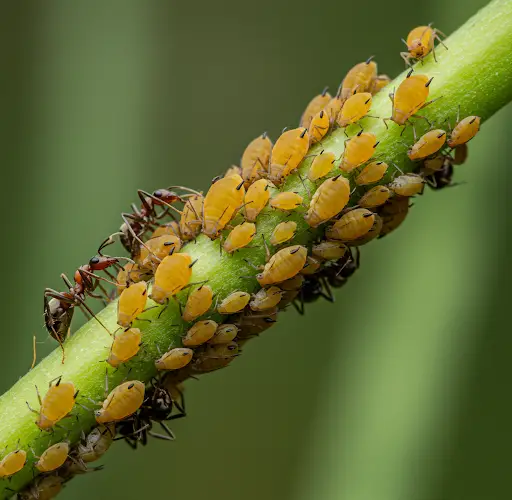Whitewashing Fruit Trees: A Natural Method for Protecting Your Orchard
Maintaining the health of fruit trees without the use of harmful chemicals is both an environmentally responsible and health-conscious choice. One time-tested and highly effective natural practice for disease and pest prevention is the whitewashing of fruit trees. This technique not only protects trees from harmful organisms but also offers several other benefits that contribute to healthier orchards and better fruit production.
What is Whitewashing?
Whitewashing is the process of applying a lime-based coating to the trunks and lower branches of fruit trees. It has been used for generations by orchardists to prevent damage caused by pests, fungi, and environmental stress. The coating reflects sunlight, protects the bark, and discourages unwanted organisms from settling on the tree.
When to Apply Whitewash
Timing is crucial for the success of whitewashing. It is usually done twice a year, depending on the climatic conditions of the region:
-
Early Winter: The first whitewashing should take place once all the leaves have fallen. This marks the beginning of the tree’s dormant season and prepares it for the cold months ahead.
-
Late Winter: A second application is recommended when the days start to become sunny and warm, and temperatures consistently stay above 0°C (32°F). This helps delay the awakening of the tree’s vegetation by at least 10 days, reducing the risk of frost damage caused by early bud break.
Why Whitewashing is Important
Whitewashing serves several purposes that make it indispensable for organic orchard care:
-
Sunlight Reflection: The white color reflects sunlight, reducing temperature fluctuations that can cause bark splitting during warm winter days followed by cold nights.
-
Slows Vegetative Growth: By reflecting sunlight, whitewash helps slow down the awakening of the tree in early spring, preventing premature blooming and frost damage.
-
Fungus Control: The lime and blue stone (copper sulfate) mixture acts as a disinfectant, killing harmful fungi and bacteria that may reside in the bark’s crevices.
-
Rodent Repellent: The strong smell and taste of the whitewash deter rodents that might otherwise gnaw on tree bark during winter.
-
Protects Young Trees: In young trees with thin bark, whitewash can also prevent sunburn during hot summer months. In regions with intense summer heat, maintaining the white coating through the warmer seasons is beneficial.
How to Apply Whitewash
For whitewashing to be effective, certain guidelines must be followed:
-
Weather Conditions: Apply only on dry days when the air temperature is above 0°C. If applied during freezing conditions, the mixture can freeze, peel off, or fail to adhere properly.
-
Area to Cover: Whitewash should be applied to the trunk and the main branches (often called the “shoulders”) of the tree. It’s advisable to cover 20–30 cm above the first tier of branches, especially for young stone fruit trees.
-
Application Method: Use a brush to apply the mixture. Brushes allow better penetration into bark cracks and branch forks, areas where pests and fungi often hide. Avoid using sprayers for this task, as they can miss critical areas.
-
Mixture Consistency: The whitewash should be thick enough to stick to the tree but still spreadable. Stir the mixture regularly during application to prevent settling of solids at the bottom.
Whitewash Recipe
A simple yet effective whitewash mixture can be made with easily accessible ingredients. Here’s a proven recipe:
-
5 liters of water
-
2 to 3 kilograms of lime (quicklime, construction lime, or garden lime can be used)
-
50 grams of blue stone (copper sulfate)
-
20 grams of table salt
Begin by dissolving the blue stone and salt in water. Once fully dissolved, slowly add the lime while continuously stirring. The end result should be a creamy, paint-like mixture that adheres well to tree bark.
The lime acts as the primary protective barrier, the blue stone serves as an antifungal agent, and the salt enhances the mixture’s adhesive and repellent qualities.
Final Thoughts
Whitewashing is a simple, cost-effective, and natural technique that offers multiple layers of protection for your fruit trees. It not only helps suppress diseases and pests but also shields trees from environmental damage. When done correctly and at the right time, whitewashing significantly improves the overall health and productivity of your orchard.
With a small investment of time and materials, you can keep your fruit trees strong and healthy year-round—without relying on synthetic chemicals.



